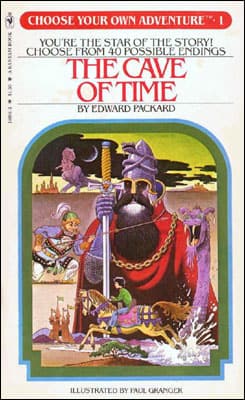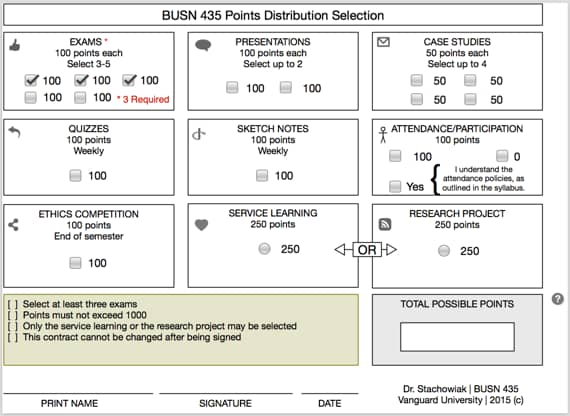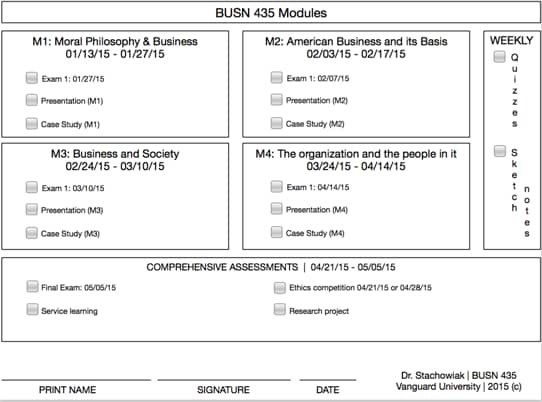When I was a kid, one of my favorite forms of story telling was the Choose Your Own Adventure series. The books were written in a non-linear way, allowing me to grapple with how I would handle a particular situation.
 Every couple of pages brought forth a dilemma with two or three possible routes to take. If I wanted to choose option A, I was directed to turn to a specific page. Option B took me to an entirely different part of the book. You could read the book repeatedly and get a different story each time.
Every couple of pages brought forth a dilemma with two or three possible routes to take. If I wanted to choose option A, I was directed to turn to a specific page. Option B took me to an entirely different part of the book. You could read the book repeatedly and get a different story each time.
Edward Packer created the series of books out of an exchange he had with his daughters. He used to tell them stories each night about a character named Pete. One day, he ran out of adventures to send Pete on and he asked his children what they thought Pete should encounter that night.
When he saw how engaged his daughters became, he decided to extend the idea into written form. The Choose Your Own Adventure series was quite successful, selling 250 million copies between 1979 and 1999.
Choose Your Own Adventure Learning
The idea for using a choose your own adventure style of instruction for my business ethics course came, initially, from my desire to incorporate some type of undergraduate research into the class. Bethany Usher was on episode 27 of Teaching in Higher Ed and was such an inspiration to me to begin to engage in the messy work of leading undergraduate research.
I wound up failing in my ability to get traction with any kind of formal research projects, but I did start to think more about approaching the class in a more flexible manner than my typical syllabi afford students.
Goals
As I started to put together a framework for the assessment for the learning, I kept a few goals in mind.
1) Offer varied methods for demonstrating learning
I wanted to be sure that students were assessed on each, main, learning outcome for the class. However, I also wanted students to be given choices as to how they might demonstrate their learning.
2) Help students discover their strengths
Instead of having students focus on improving their weak areas, my desire was that this course would help them identify and amplify their strengths.
3) Ask students to take responsibility for their learning
I also hoped that students would be more autonomous in their learning and have some of their childlike curiosity sparked.
Structure
I started by putting together a graphic that showed the students the various ways they had to demonstrate their learning throughout the semester and the associated potential point values.
In order to ensure that students demonstrated learning in each of the four primary learning outcomes, they were required to take at least three exams (out of a possible five).
Each student chose a combination of points that added up to 1000 and only contained one project worth 250 points (the service learning or research project).
Then, I showed them how the various assignments were timed throughout the semester.
Some assignments were based on the four modules, each around 3-4 weeks apart. I had students use the scheduling service, Doodle, to sign up to give their in class presentations.
The timing of the exams was not flexible, as they occurred in class and were only offered on a single night of class. The timing of the weekly assignments was also not flexible, as they were designed to be reinforcement for before the class sessions were held.
There were a series of comprehensive assignments, which were assessed in the last few weeks of the semester. Some of our graduating accounting majors put together this video on how to create more ethical business practices through internal controls, as their service learning project.
The intent was that it could help people with limited business experience reduce their risk of fraud. One area that I know I need to improve on the next time I teach this class is to have more measurable outcomes surrounding what “done” looks like for these projects. While I was incredibly impressed with the video, I had hoped that they would have a particular group of individuals who could be helped by it.
I'm disappointed that I didn't outline my expectations more effectively, but am also reminded of what my friend, Doug McKee, says:
If you aren't failing at teaching, you aren't trying hard enough.
Results
On the final week of our class, I asked the students to give input as to what worked and what didn't about the way the class was structured. I had been candid with them in the beginning about my experimentation with this format and we had made some tweaks along the way as we discovered problems with my initial design.
The students were excited to share their feedback with me on how much they liked the class structure.
Here are some of the notes I took that relate directly to the Choose Your Own Adventure learning approach:
We got to play to our strengths.
I could schedule the assignments around my other classes' exam and assignment dates.
It shifted the responsibility for learning from you, as the professor, to us, as the students.
I liked being able to decide whether or not attendance was going to be a factor in my grade for this class.
The flexibility of this structure was great.
Planning out which assignments I would do when also helped me do a little thinking about my learning, in advance of right around when the assignment was due, like I do in so many of my other classes.
It was rewarding to discover that the goals I had set out for this experiment were achieved. I also found other aspects to the approach that I hadn't even anticipated as a potential benefit.
Other ideas
I wasn't surprised when I discovered that I'm not the only person to have had the idea to make a class in to a Choose Your Own Adventure format. Here are 20 ideas for ways you might use a similar format in your classes.
[reminder]Let us know what ways you have given your students more control over their own learning. [/reminder]






Wow, what a terrific and comprehensive way to give students control over their own learning and their grade in the class. Reminds me a lot of Derek Bruff’s video on how to increase intrinsic student motivation: https://www.youtube.com/watch?v=cFDFE6mK108
This is an area that I haven’t explored in my own teaching, but I love it. The scary part is that it looks like a lot more work for the instructor–Did it turn out that way?
I blogged my thoughts about how much harder it was to teach in this Choose Your Own Adventure style of teaching:
https://teachinginhighered.com/teaching/choose-your-own-adventure-learning-part-2/
Thanks for the question – – and for the introduction to Derek Bruff’s video…